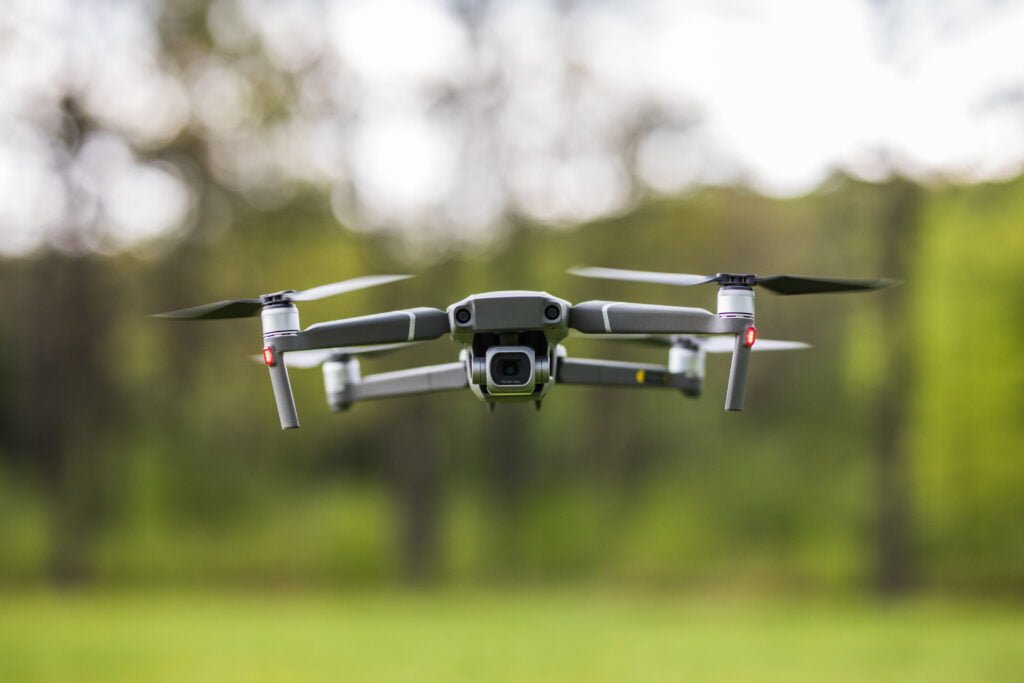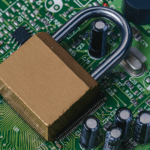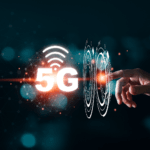Unmanned aerial vehicles, or drones, have changed sectors and created a wide range of new opportunities, from delivery services to aerial photography. To fully realize their potential, the goal is to achieve true autonomy in navigation and surveillance skills.
Field-Programmable Gate Arrays (FPGAs) are a disruptive technology that can be used in this situation. FPGAs are an excellent choice for incorporation into autonomous drones because they provide unmatched flexibility and real-time computing power.
In this blog, we explore the symbiotic relationship between FPGA technology and autonomous drones, understanding the fundamentals of FPGAs and their function in navigation, flight control, and surveillance, while also taking into account the possibility that FPGA-based drones will revolutionize aerial operations with previously unseen efficiency and intelligence.
Autonomous Drone Navigation Systems
Unmanned aerial vehicles (UAVs) need autonomous drone navigation systems in order to function autonomously and without human supervision. For a variety of uses, such as aerial surveillance, search and rescue operations, agriculture, infrastructure inspection, and delivery services, these advanced devices are crucial. The foundations of autonomous drone navigation systems will be covered in this section, along with the limitations of conventional approaches and the breakthroughs made feasible by the use of FPGA technology.
Traditional Navigation Methods and Their Drawbacks:
- A. Remote Control: Early drone navigation relied heavily on manual remote control, which required skilled operators and limited the drone’s range and mission complexity.
- B. GPS-Based Navigation: Global Positioning System (GPS) has been a crucial tool for drone navigation, but it has limitations in areas with poor GPS coverage, such as urban canyons or indoors.
- C. Waypoint Navigation: Drones could follow predefined waypoints, but this method lacked real-time adaptability and obstacle avoidance capability.
- D. Visual Navigation: Vision-based methods utilizing cameras and computer vision techniques faced challenges in handling varying lighting conditions and fast-moving environments.
Role of FPGAs in Improving Drone Navigation:
- A. Real-Time Processing: FPGAs excel in parallel processing and low-latency operations, enabling quick data processing and decision-making for drone navigation.
- B. Sensor Fusion: FPGAs facilitate seamless integration and fusion of data from various sensors like GPS, IMUs (Inertial Measurement Units), LiDAR, and cameras, providing a comprehensive understanding of the drone’s environment.
- C. Redundancy and Reliability: FPGAs allow redundant navigation systems, enhancing the drone’s reliability and safety by providing backup systems in case of sensor failure.
- D. Customizability: FPGA’s programmability enables drone manufacturers to tailor navigation algorithms for specific use cases, improving the overall efficiency of the drone.
FPGA-Based Navigation Algorithms:
- A. Simultaneous Localization and Mapping (SLAM): FPGA accelerates SLAM algorithms, allowing drones to create maps of their surroundings and navigate in real time without relying solely on GPS.
- B. Path Planning: FPGA can efficiently compute optimal paths while considering obstacles, terrain, and mission objectives, ensuring safe and efficient drone navigation.
- C. Obstacle Avoidance: FPGA-based obstacle detection and avoidance algorithms enable drones to autonomously steer clear of obstacles, even in dynamic and challenging environments.
- D. Collision Detection: FPGAs can process collision detection algorithms rapidly, mitigating the risk of drone collisions during complex maneuvers.
Case Studies Showcasing FPGA-Based Navigation Systems in Drones:
- A. Drone Delivery: Explore how autonomous drone navigation systems equipped with FPGAs have revolutionized the delivery industry, making last-mile deliveries more efficient and cost-effective.
- B. Search and Rescue: Learn about how FPGA-driven navigation systems aid search and rescue missions by providing real-time situational awareness and swift response capabilities.
- C. Precision Agriculture: Discover how FPGAs enhance drone navigation for precision agriculture, enabling targeted crop monitoring, irrigation, and pesticide applications.
FPGA Implementation in Drone Flight Control
The stability, maneuverability, and reactivity of autonomous drones are all dependent on effective flight control. Typical microcontroller or microprocessor-based traditional drone flight control systems may have processing power and real-time response constraints.
When it comes to drone flight control, FPGA (Field-Programmable Gate Arrays) systems have a lot to offer. In this section, we’ll look at how FPGA technology improves drone flight control and solves various problems that traditional control systems have.
Real-Time Processing Capabilities:
FPGAs are programmable hardware-based devices that enable parallel processing and specialized hardware circuits designed for particular purposes. This feature makes FPGAs perfect for real-time applications like drone flight control since it allows them to run control algorithms with incredibly low latency.
FPGAs have the ability to process data continuously, which enables more rapid decision-making and accurate control responses when compared to software-based control systems, which demand time-consuming instruction fetching and execution.
Customizable Flight Control Algorithms:
Custom flight control algorithms can be implemented using FPGAs and are tuned for certain drone setups and mission needs. To get the best flight performance and stability, drone makers can fine-tune the control logic and parameters using FPGA programming.
Without modifying the drone’s hardware, iterative upgrades and improvements to the flight control system are possible because of the field reprogrammability of FPGAs.
Redundancy and Fault Tolerance:
When using autonomous drones, safety comes first. FPGAs have built-in redundancy capabilities that can be used to increase fault tolerance.
The flight control system can continue to function even if some components fail thanks to the implementation of many redundant control circuits within the FPGA, lowering the danger of crashes or mishaps.
Low Power Consumption:
The energy efficiency of systems using FPGA-based flight controls is well recognized. In comparison to conventional microcontrollers that conduct sequential tasks, FPGAs use less power since they process data in parallel and only activate the appropriate circuits.
Longer flight lengths and greater overall efficiency are made possible by the lower power consumption, which is especially important for drones employed for surveillance or aerial inspection activities.
Integration with Sensor Fusion:
FPGAs may smoothly interface with a variety of sensors, including accelerometers, gyroscopes, and GPS modules, to collect information about the drone’s location, orientation, and surrounding environment in real-time.
Even in difficult and dynamic conditions, sensor fusion techniques and FPGA processing allow for precise and dependable flight control decisions.
Performance and Scalability:
The needs for flight control systems change as drone technology does. Future drone applications will have higher processing needs, and FPGAs can handle sophisticated algorithms and scale with those expectations.
With the use of newer, more potent FPGA chips, drone manufacturers can enhance their current FPGA-based flight control systems without having to completely redesign them.
FPGA’s Impact on Drone Battery Life and Efficiency
Battery life and general energy efficiency are major issues that continue to hinder drone technology as their use spreads across many different industries. Drones’ short flight times have made it difficult for them to be widely used for a variety of tasks, especially in those requiring prolonged flight times, such surveillance, aerial mapping, and search and rescue missions.
The use of Field-Programmable Gate Arrays (FPGAs) in autonomous drones, however, has showed promise in resolving these issues with battery life and efficiency. We will examine how FPGAs affect drone battery life and improve overall energy efficiency in this part.
Reduced Power Consumption:
FPGAs are inherently power-efficient devices compared to general-purpose processors like CPUs and GPUs. Their design allows for the implementation of specific hardware circuits tailored to the drone’s required tasks.
FPGA-based solutions can significantly reduce power consumption by performing computations with higher energy efficiency, leading to extended flight times for drones.
Accelerated Processing Speed:
FPGAs excel in parallel processing, enabling them to execute multiple tasks simultaneously. This parallelism enhances the overall processing speed, enabling faster data analysis and decision-making during flight.
The ability to process data quickly and efficiently allows drones to complete missions in shorter time frames, thereby conserving battery power.
Real-time Data Processing Onboard:
One of the primary benefits of using FPGAs in drones is their capacity to process data in real-time directly onboard the drone. This reduces the need to transmit large amounts of raw data to ground stations for processing, which can be energy-intensive.
By processing data onboard, drones can make critical decisions autonomously and streamline communication with the operator, leading to reduced power consumption and increased operational efficiency.
Optimized Control Systems:
FPGAs offer precise control over various drone subsystems, including flight control, sensor integration, and communication modules.
Optimizing the control systems with FPGA-based solutions allows for more efficient and stable flight patterns, reducing unnecessary movements that would otherwise drain the battery.
Dynamic Power Management:
FPGAs enable dynamic power management techniques, where specific parts of the FPGA can be powered down when not in use, reducing power consumption.
Drones equipped with FPGA-based systems can adapt their power usage based on the current operational requirements, further extending their flight time.
Intelligent Task Offloading:
FPGAs facilitate intelligent task offloading by performing computationally intensive tasks directly on the FPGA, leaving less demanding tasks for the drone’s main processor.
By offloading tasks to the FPGA, the drone’s main processor can operate at lower power levels, thus conserving energy.
Efficient Image and Data Compression:
Image and data compression algorithms implemented on FPGAs can reduce the amount of data that needs to be transmitted or stored, resulting in lower energy consumption during data transmission and storage processes.
Adaptable Hardware Design:
FPGAs offer flexibility in hardware design, allowing developers to continually optimize and fine-tune algorithms to achieve higher energy efficiency.
This adaptability ensures that FPGA-based drone systems can be updated and improved over time, maximizing their battery life and overall performance.
Conclusion:
In conclusion, the incorporation of FPGA technology in autonomous drones has the potential to revolutionize airborne surveillance and navigation. Drones can achieve longer flying periods and greater operational efficiency by utilizing the hardware acceleration and power efficiency of FPGAs. By transferring computationally demanding operations to FPGAs, the burden on traditional processors is reduced, resulting in reduced power consumption and improved drone performance.
Additionally, FPGAs’ real-time processing and dynamic reconfiguration characteristics enable quick decisions and adaptation while in flight, resulting in lower latency and improved control. Drones may get more precise and complete data with the help of sensor fusion and FPGA technology, allowing them to navigate their surroundings with greater accuracy and efficiency while using less power by only processing the information that is absolutely necessary.
FPGA-based drones have the potential to transform a number of industries, including aerial photography, surveillance, and delivery services, as we look to the future. To ensure the appropriate and secure implementation of FPGA-driven drone systems, it is essential to address safety and regulatory issues. FPGA technology is poised to play a crucial role in determining the future of autonomous drones and elevating aerial navigation and surveillance to new levels through ongoing developments and cooperative efforts.



![What is FPGA Introduction to FPGA Basics [2023] computer-chip-dark-background-with-word-intel-it](https://fpgainsights.com/wp-content/uploads/2023/06/computer-chip-dark-background-with-word-intel-it-300x171.jpg)








